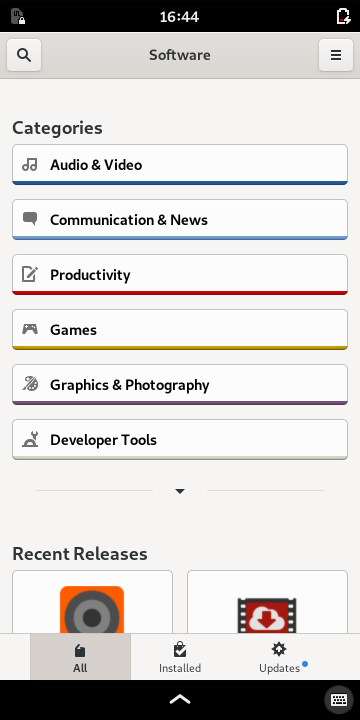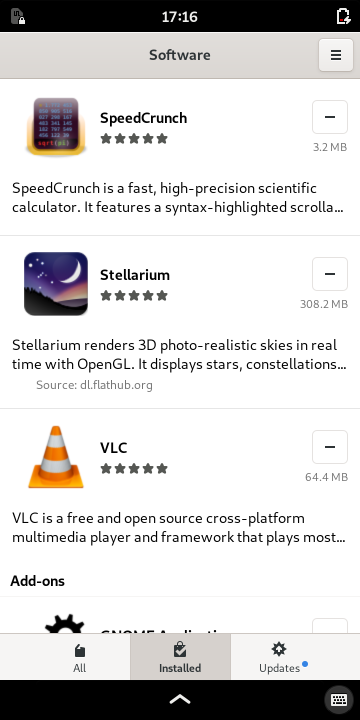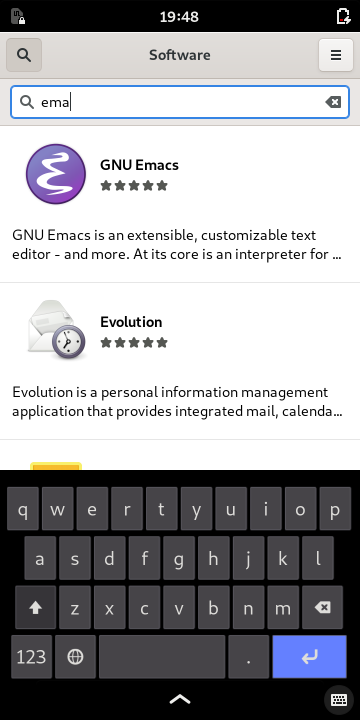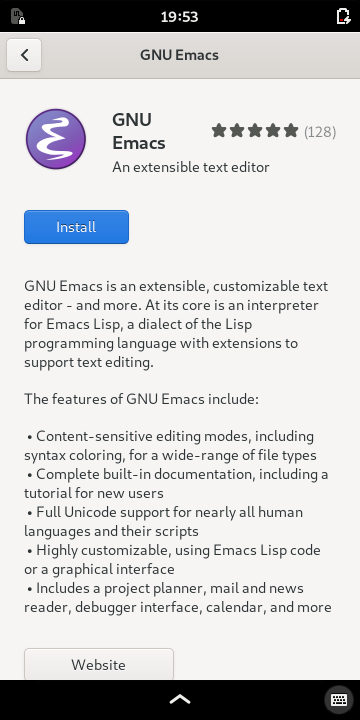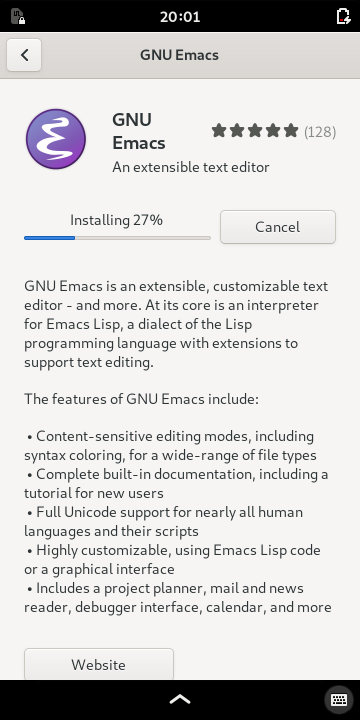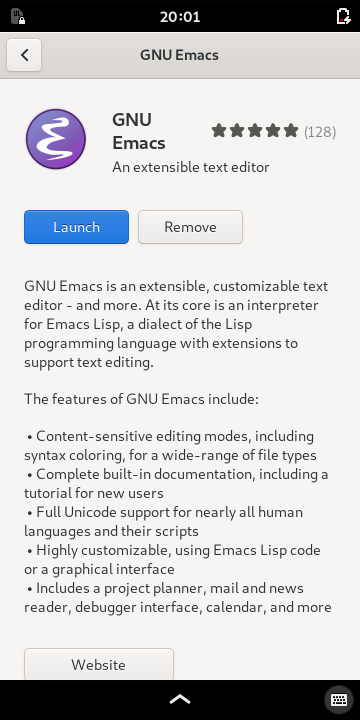Graphical Tools¶
Most users will prefer to use graphical applications and tools to manage the software on their phone. This page describes the default application for doing this as well as any alternatives.
Users and software developers may prefer to use other tools that they are more comfortable with, or those that give them more control over package management on their phone. The later sections in this chapter cover installation, uninstallation, updating and upgrading of packages from a command line user’s perspective.
GNOME Software¶
Although there are two different types of package format used on the Librem 5, packaged software can be installed using the GNOME Software application, which provides an easy-to-use graphical interface for searching, installing and uninstalling packages.
Launching GNOME Software¶
Launch GNOME Software by locating its icon in the app drawer.
When it is run, GNOME Software should show a page like the one shown below, with a list of Categories above the Recent Releases.
The header bar contains a search button that can be used to search for applications and a menu that allows you to add new software sources.
At the bottom of the screen, you can choose between three modes:

These modes are used to perform different tasks:
- All allows you to browse all the applications, including those you have installed and those that are available to download.
- Installed shows only the applications that have been installed, either as system defaults or by you.
- Updates shows the applications and other components that require updating, and allows you to update them individually or as a whole
The following sections describe how to perform some common package management tasks.
Showing Installed Applications¶
Select the tab for the Installed mode at the bottom of the screen.
Each of the installed applications can be uninstalled by pressing the minus - button to the right of the application’s name and icon. You will be asked to confirm that you wish to uninstall the application.
Searching for Applications¶
On the All page, you can find a search button at the left edge of the header bar. Pressing this button causes a search bar to appear. The on-screen keyboard should also appear, allowing you to enter keywords.
Enter the search terms for the application you are looking for. The page will update to show appropriate matches as you enter text, finding applications based on their AppStream metadata (see the Treasure example for more information about this).
Once you have found a suitable application, select it in the list of results to show more information about it. You can always return to the search results by pressing the back button at the left edge of the header bar.
Installing an Application¶
Once you have found an application you want to install, you can review the description, software license and other details on its information page.
You may then choose to install the application by pressing the Install button, or press the back button at the left edge of the header bar to return to the search results.
When you decide to install the application, progress on the installation process is reported above the description of the application.
When the application has finished installing, you can launch it immediately by pressing the Launch button. If you changed your mind, you can also remove it by pressing the Remove button. You will be asked for confirmation before the application is uninstalled.
Installed applications are available in the shell’s app drawer, so you do not need to use GNOME Software to launch them.
Updating Applications¶
It is a good idea to update applications and other components regularly to ensure that you have the latest versions of them. These should contain fixes for any problems that have been reported by users and developers.
Each application that requires an update can be updated individually by pressing the button on the right hand side of its name. The amount of data that will be downloaded is shown below this button.
Alternatively, you can press the Update All button to update all applications that require updates. Note that this may require large amounts of data to be downloaded.
When you update an application, the button to the right of it becomes an update indicator which shows the progress being made to download new data.
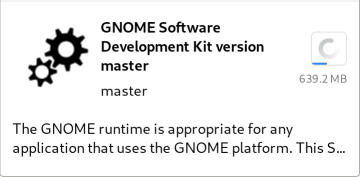
When an application or component is updating, progress is shown underneath the update indicator.
The application or component will be removed from the list of updates after it has been updated.
You can configure how updates are handled by opening the application menu and selecting the Update Preferences item.
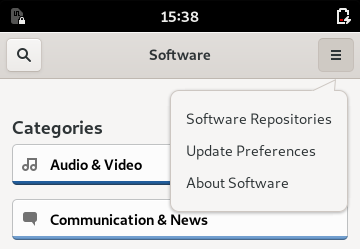
The application menu contains an option to change the update preferences.
Selecting this item opens a page that allows you to configure how updates are performed.
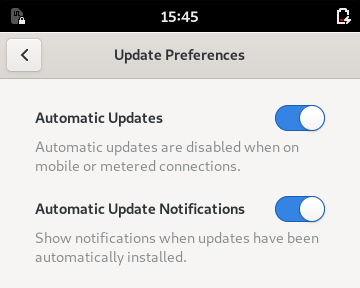
The Update Preferences page contains options for managing software updates.
When you have adjusted the options, press the back button to return to the previous view.
Adding New Software Sources¶
Packages can be downloaded from a variety of sources. To configure these, open the menu by pressing the button at the right hand edge of the header bar.

The application menu contains an option to configure the software repositories.
Select the Software Repositories item to launch a separate tool for adding, removing and configuring the remote repositories containing software that can be downloaded.
